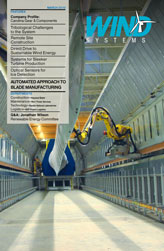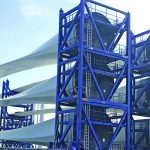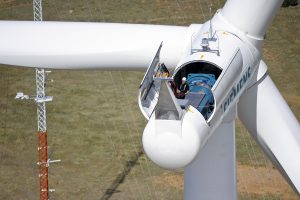Wind power companies routinely face performance issues throughout their supply chains. These functional “gaps” often become problems that can prove very costly. Some gaps are more obvious than others. For example, detentions are among the biggest challenges… detentions of trucks because equipment isn’t ready to be picked up, of ships when it’s not delivered to the port on time, and at the jobsite because roads aren’t completed.
Ship detentions are particularly expensive. “Laycan” is a chartering term that stands for laydays—agreed dates within which vessels can arrive to load cargo—commencement, and cancelling. It specifies the earliest date on which laytime, or time allowed for loading or discharging, can commence, and the latest date after which the charterer can cancel the charterparty.
Natural forces also play a spoiler role, when winds are over a certain Beaufort and the project is on hold because nothing can operate. Each supply chain gap demands extra effort, resulting in additional costs. Although you can’t control natural forces, you can maximize control of the transportation interfaces. You want to do more than just plug the gaps in your supply chain. Instead you want a longer-term, standardized solution that puts you in control so that events don’t control you. It should be routine. That is where an experienced logistics service provider can help. Accurate planning enables you to fill gaps and avoid unnecessary costs affecting your schedule and bottom line.
Information
There are many gaps that can go unnoticed, including lack of timely information, poor data input and output, and inaccurate cost estimates. We recommend you select a logistics provider that has reliable, state-of-the-art business intelligence tools so you can proactively handle potential detention issues, preferably via an online customer service portal that provides tracking information. One click and you should have access to the movement of information and material and be able to check the delivery of your cargo.
Look for a system that provides alerts, track and trace, documentation, reports, and metrics. The system should be scalable to individual KPIs, duties, and tasks.
Improved data exchange puts you in control of the visibility of information so you can respond immediately to the issues that drive your projects: end-to-end, real-time information that translates into reduced risk, improved savings, and bottom-line value to your company. Remember that visibility = value, and value = $.
The system should be proactive so that you and your logistics provider can automatically receive information based on an event taking place: when an event should take place, or if it did not take place. Details such as estimated vs. actual departures, or the transit time of a particular vessel. Alerts should be set up by carrier, people, origin, and destination. This way exceptions drive the reports and their non conformances, giving you a visual timeline. You can measure not only if an event does or does not take place, but also the time difference between what is promised and what actually happens.
By the numbers
Another potential information gap is pre-bid calculations. Your logistics provider could be estimating costs for projects that may be years down the road. The estimate must be thorough and accurate, not only for current planning but also for the longer term, when the project is implemented. Your provider should consider inflation, and support their calculation. Many elements have to be considered, including annual transportation cost increases by country such as railway tariffs. Like any information system, data input is as important as data output. A reliable logistics provider will obtain details on every component that has to be quoted.
By allowing your project logistics provider to help you standardize the steps in your supply chain you will eliminate many, if not all of the gaps and performance losses that can prove costly to your wind power project. Remember there is no substitute for industry expertise.




































